Like many varieties in the philodendron family, the Brasil is a true stunner. Similar to the Heartleaf Philodendron, of which it is a cultivar, it boasts oval leaves with lance-like tips and a striking glossy texture. However, what sets it apart is its lime green variegation, which stretches from its leaves’ center veins outwards towards their edges.
Native to South America, the Philodendron Brasil is an excellent investment for beginner gardeners or those with a low-maintenance lifestyle, given its ease of care. This beauty is as resilient as it is good-looking, making it no surprise that the Brasil is popular all over the world.
In this article, we’ll take a deep dive into everything there is to know about the Philodendron Brasil, from how it got its name to how big it gets to how to diagnose potential health issues. Ready? Let’s investigate.
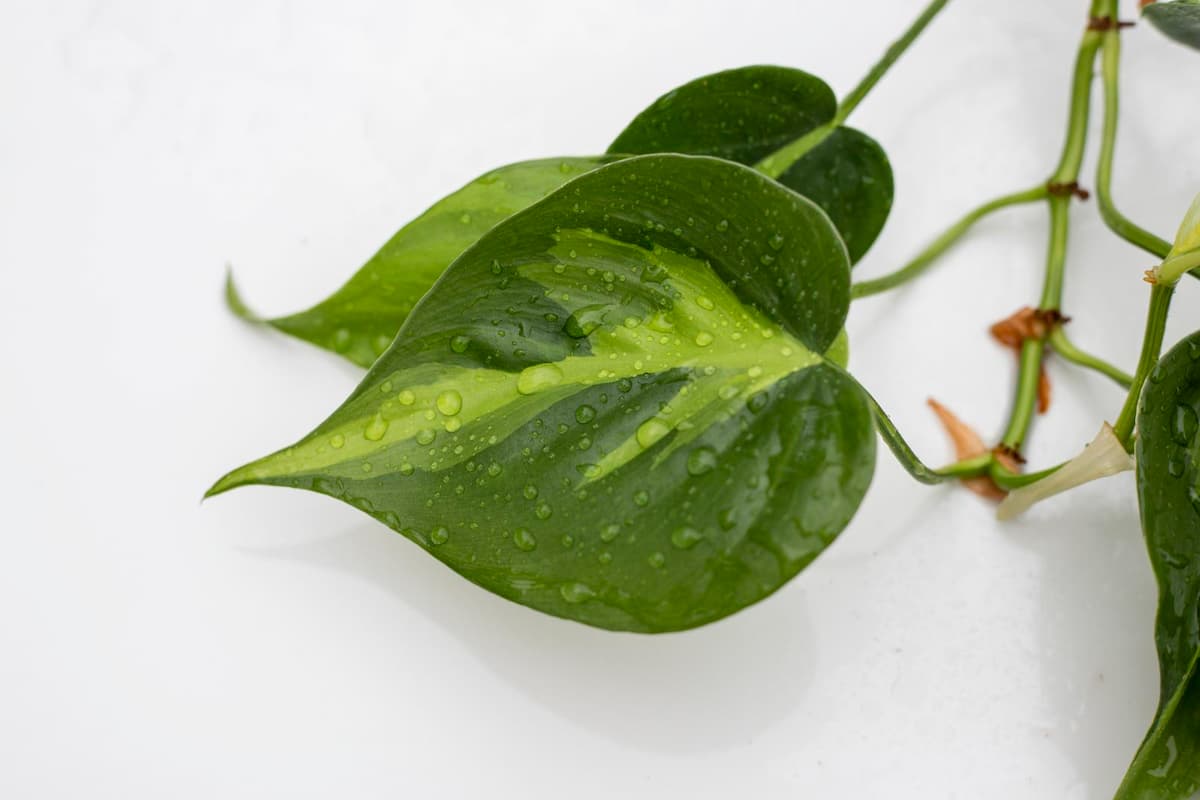
Table of Contents
Why is it called Philodendron Brasil?
The Philodendron Brasil’s unique name stems from the color of its variegation, which sports similar hues to the Brazilian flag’s bright green and yellow. Indeed, the plant also hails from South America, giving the Brasil’s moniker a fortuitous dual meaning.
Technically, Philodendron Brasil’s scientific name is Philodendron hederaceum’ Brasil,’ identifying this gorgeous plant by taxonomy as a cultivar of the Heartleaf Philodendron family. That said, it typically goes by Brasil or scandens Brasil because of its variegation.

Indeed, upon its discovery (in Brazil, no less) in 1991, it was said to bear a striking resemblance to the colors of the Brazilian flag. The rich green base of each leaf is complemented by a lighter green or yellow center splash, amplifying this charming coincidence.
‘Scandens,’ – another term often applied to the Brasil’s name – simply means ‘climbing,’ which is a nod to the Brasil’s thick, winding vines.
Is Philodendron Brasil the same as Pothos?
Although the Philodendron Brasil looks very similar to, and is often mistaken for, the Golden Pothos, they are not the same plant. Both the Brasil and the Golden Pothos are part of the Araceae family, but the former belongs to the Philodendron genus, whereas the latter belongs to the Epipremnum genus.
At first glance, telling these two plants apart can be tricky, but there are a few discerning characteristics that can assist you, particularly regarding their leaves and aerial roots. Where the Brasil has heart-shaped leaves curving inward at the stem, Pothos leaves have a round base. Furthermore, the aerial roots of a Philodendron are thinner, longer, and finer than the stubby node-like aerial roots of the Pothos.
Is Philodendron Brasil a money plant?
‘Money Plant’ is a nickname coined for the Golden Pothos, which (as mentioned above) is similar in aesthetic to the Philodendron Brasil. For this reason, the Brasil is often mistakenly identified as a Money Plant, although technically, it is a different plant altogether.
That said, and depending on where in the world you are located, Money Plant can also refer to the Pilea peperomioides of China or the Malabar Chestnut of South America, which share no visual similarities to the Brasil.

Is Philodendron Brasil easy to care for?
Part of what makes the Philodendron Brasil so popular is its ease of care. Although it is a tropical plant that prefers warmth and humidity, it fares very well in a range of indoor conditions, including those with less-than-ideal lighting. Regular watering, good soil, sufficient sun, and occasional feeding will see your Brasil thrive.
For the forgetful among us, the Philodendron Brasil is a near-perfect choice of houseplant that requires surprisingly little maintenance in exchange for gratifying growth. This hardy beauty does just fine with weekly watering that can be tapered off in the colder months of the year. Nutrient-rich soil is preferred, with good drainage and air circulation.
In terms of light, it is best to position your Brasil close to a sunny window that receives 6 to 8 hours of light per day. That said, if you don’t quite have the proper sunshine intake for this plant, it can still survive; it may just suffer slower growth. Of almost greater importance to the Brasil’s health is humidity, which can easily be supplemented by a plug-in humidifier or by bundling a collection of houseplants together.
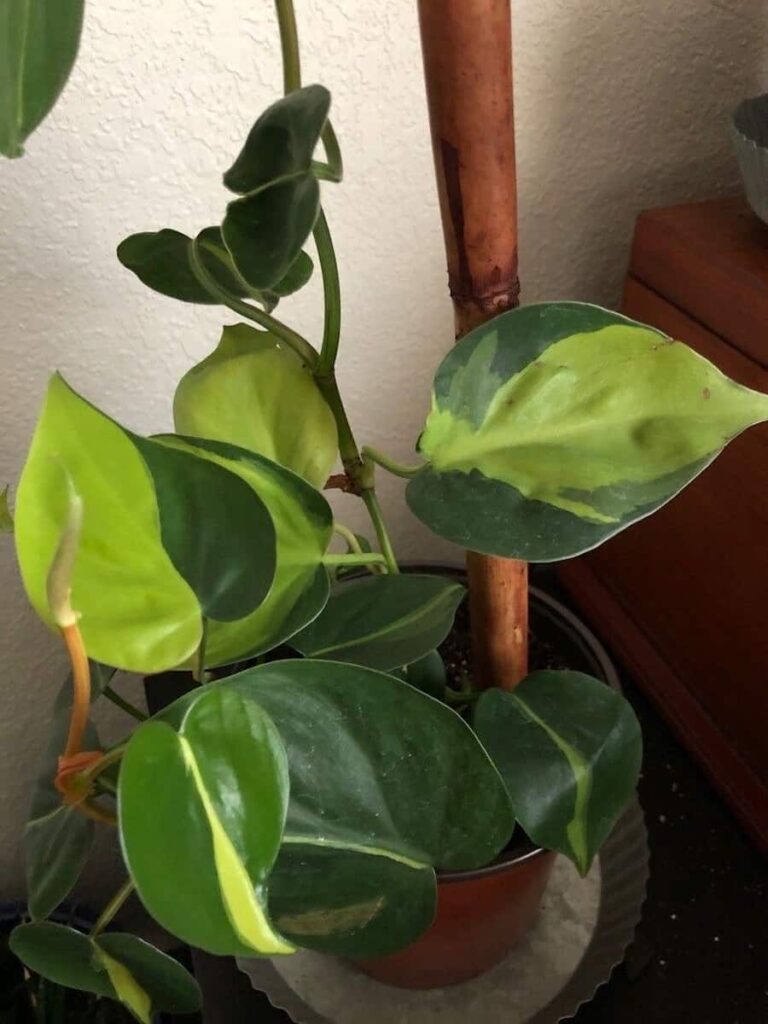
On that note, a lagging or leggy Philodendron Brasil can be treated to occasional doses of a slow-release fertilizer during its growth months (spring and summer) to give it a boost of energy. I also recommend pruning away dead or dying leaves to prevent pointless energy expenditure and make way for new growth.
Fortunately, the Philodendron Brasil is not prone to pests or diseases. The biggest concern for Philodendron lovers is generally root rot, brought on by overwatering, which is why it is never advisable to drench your Brasil or let it stand in pooled water.
How to care for a Philodendron Brasil
The best way to care for a Philodendron Brasil is to try and emulate its natural, tropical environment. This involves providing it with bright, indirect light, plenty of warmth and humidity, well-draining soil, good hydration, and seasonal feeding. Occasional pruning and cleaning also help your Philodendron Brasil’ overall well-being.
Philodendron Brasil make great houseplants, and if you have any hesitation about their care, worry no further. These gracious green beauties are low-maintenance and straightforward in terms of their needs, making them perfect for even beginner plant parents.
Bearing in mind that Philodendron Brasil are tropical plants, the best environment you can offer them is one where they’ll have a sunny spot with lots of light, relative humidity, and plenty of moisture.
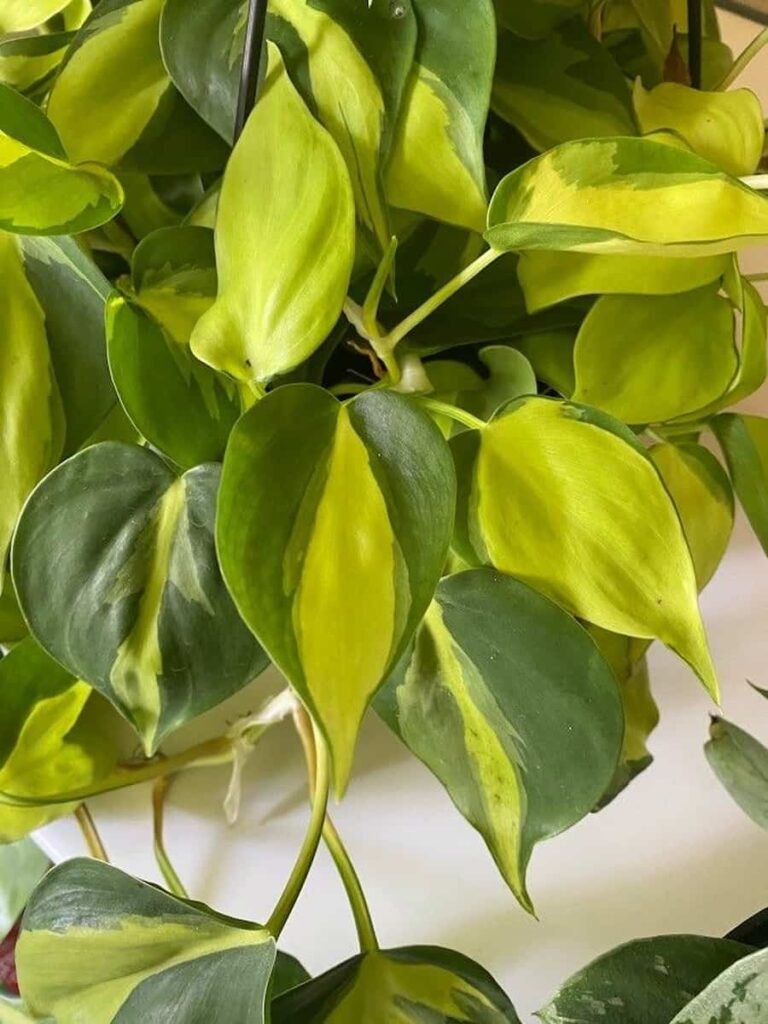
In good news, most homes are already set up for this with East and South-facing windows and a generalized humidity level of around 50%. To supplement the rest of their care needs, you just need to ensure your Philodendron Brasil stays hydrated, is fed with both good soil and that you occasionally fertilize your philodendron.
In the following sections, we’ll look at Philodendron Brasil care in greater detail to equip you with everything you need to help your houseplants thrive.
How much light does a Philodendron Brasil need?
Philodendron Brasil prefer at least six to eight hours of bright, indirect sunlight each day. As their leaves can be vulnerable if they receive too much light, keep an eye out for any signs of sunburn on your Philodendron Brasil’s leaves, such as yellowing leaves or brown spots appearing.
Most (if not all) plants depend on sunlight energy to grow, and Philodendron Brasil are no different. Native to tropical America, they’re accustomed to dappled light from the jungle canopies above them, which you can try to mimic in the home with clever positioning.
In the winter, when it starts to cool down, and there is less indoor sun available, a Philodendron Brasil’s light needs can be augmented with a bit of time spent outdoors on a sheltered patio or balcony. The fresh air will do them good, too.
Find out more: Philodendron Light Needs: The Ultimate Guide
What is the right temperature for Philodendron Brasil?
Your Philodendron Brasil will thrive in temperatures between 75°F and 85°F (23°C to 29°C). While they can survive at lower temperatures than this, don’t let them stay for too long anywhere less than 65°F (18°C) as your plant may not survive.
Clearly some plants, like Philodendron Brasil, like it hot. However, the real kicker is ensuring your Philodendron Brasil are placed in an area with mid-to-high humidity.
What are the best humidity levels for a Philodendron Brasil?
Philodendron Brasil prefer humidity levels of around 65% to 80%. Given that they are native to tropical Central and South America, they thrive in humidity conditions similar to their natural habitat. However, most homes won’t reach these levels, so you may need to boost this for your Philodendron Brasil to thrive.
Houseplants that receive adequate amounts of sunlight daily generally don’t require supplementary humidity, particularly if you consider most homes fall in the 40% to 50% range. However, with their tropical inclinations, Philodendron Brasil can benefit from a little extra care in this regard.

The easiest, in my opinion, is to invest in a small plug-in humidifier. Alternatively, you can rest your Philodendron Brasil on a damp pebble tray, making sure not to let their roots touch the water.
Alternatively, if you have a whole collection of houseplants, cluster them together so they can benefit from each other’s transpiration processes. It has the added benefit of looking great too!
What soil is best for Philodendron Brasil?
A Philodendron Brasil’s soil mix should be loosely clustered, nutrient-rich, and well-draining. The high nutrient level emulates its natural habitat, where plant material in the rainforest falls onto Philodendron Brasil and nourishes them. Having light and airy potting mix helps to avoid the soil staying too soggy, which can lead to root rot.
While many Philodendron Brasil varieties have aerial roots as well as ground-dwelling (terrestrial) roots, they receive the bulk of their vitamins and minerals from their soil, making it an essential part of their fundamental care.
Top pick: My preferred soil for Philodendron Brasil is the Miracle-Gro Tropical Potting Mix (check the latest price here).
It’s very well draining and will feed nutrients to your Philodendron Brasil for up to six months. For a tropical plant like the Philodendron Brasil, it’s got everything you need.
Buying pre-blended Philodendron Brasil soil from most garden centers is a simple option. Alternatively, you can easily mix your own by combining potting soil with chunky bits of bark (grab some here) and moisture-retentive perlite (get it here).
If you’re buying your Philodendron Brasil pre-potted, they’ll likely arrive in appropriate soil from the get-go. Even so, you’ll need to replace their soil every 18 to 24 months to prevent a build-up of salts or eliminate any beasties and creatures like pests, fungi, or bacteria, so make sure you’re replanting them in the best soil for philodendrons so they continue to thrive.
Indeed, this is a good maintenance practice for all houseplants, not just Philodendron Brasil!
How often should you water Philodendron Brasil?
You should water your Philodendron Brasil when the top two inches of its soil has dried out, which you can test by sticking your finger into your plant’s potting mix. In summer, this will be around once per week, but may be less frequent in the cooler months.
It’s always good to have a watering schedule for your plants, but with so many factors (like season and sunlight) at play, I prefer to meet my Philodendron Brasil’s watering needs as required – by waiting for their top inch of soil to dry out before hydrating.

The reason for this is that the leading cause of fatality in Philodendron Brasil is root rot, which they tend to contract from overly soggy soil or from standing in pooled water. As they’re pretty drought-tolerant, it’s best to err on the side of caution and only water philodendrons as they need it rather than strictly once-per-week.
That said, when you do water them, a hearty dose of moisture is great, provided it doesn’t make their soil soggy and heavy, which weighs down on their root systems.
When should I fertilize my Philodendron Brasil?
Philodendron Brasil likes some fertilizer every now and again. In fact, they do their best when they are fed twice a month during their active growing season, which is the spring and summer. However, you shouldn’t fertilize your Philodendron Brasil during its dormant period in the cooler months.
This is because feeding the plant during this time can interfere with its natural growing cycle.
Overall, though, occasional feeding with a balanced fertilizer is greatly beneficial for Philodendron Brasil, especially at the start of their growing seasons in the spring and summer months.
If you think about it, these jungle-dwellers are used to all the rich, dense nutrients they have access to from the forest floor, which can’t be substituted by typical potting soil. An all-purpose liquid fertilizer at half strength is a good way to replace their natural feeding schedule, providing them with an extra dose of energy for new growth.
My top pick: My recommendation for the best fertilizer for your Philodendron Brasil is EZ-Gro 20-20-20 All Purpose Liquid Fertilizer.
It’s extremely easy to use and has the perfect balance of nutrients for Philodendron Brasil. You can check the latest price here.
Should I prune my Philodendron Brasil?
You should prune your Philodendron Brasil from time to time as part of their regular maintenance, with spring being the best time of the year to do this. Removing dead foliage or browning stems will allow robust leaves and vines to draw in more sunlight and stop your plant from wasting energy.
Just like humans shower, cut their hair, and clip their nails, Philodendron Brasil can do with occasional grooming, especially when it comes to eradicating old or dying growth. Fortunately, trimming your philodendron really isn’t hard to do.
When it comes to cleaning, remember that each large leaf of your Philodendron Brasil is full of sunlight receptors that are easily blocked by dust or grime. Wiping down your leaves with a damp cloth keeps them clean and free to function at their best.
When should I repot my Philodendron Brasil
The Philodendron Brasil is not a plant that needs to be repotted regularly, with it often only needing to be transplanted every two to three years. With that said, however, you should repot your Philodendron Brasil if you see roots growing out of the drainage holes.
In fact, this plant does well when it is rootbound. That said, when you do transplant a Philodendron Brasil, do so in spring before the plant starts to produce new growth, and select a pot that is about 3 sizes larger than the current pot.
Alternatively, you can wait until fall to perform the transplant.
Find out more: 7 Simple Steps to Repot Philodendrons (+ When To Do It)
How to propagate a Philodendron Brasil
The easiest way to propagate your Philodendron Brasil is to root it in water. Simply place your cutting into a jar with water in it and place it in a warm sunny spot, and wait. Refresh the water once a week to keep it oxygenated and, in six to eight weeks, new roots will appear.
At that point, your Philodendron Brasil cutting will be ready for transplantation!
Philodendron Brasil can be propagated from stem cuttings, provided they have a visible node and a leaf or two to draw in moisture from the air. You can either root your cuttings in water first or plant them directly into soil.
Alternatively, if you only have a small piece of stem, you can try to root them in a nutrient-rich growing medium with concentrated humidity.
That is, a second option is to place your cutting directly into a planter with soil. This is slightly riskier as they require a lot of humidity to make up for the moisture they’d usually draw via roots, but it can be equally effective with proper care.
If your cutting has no leaves, try laying it on a bed of peat moss and covering the tray or container with plastic to retain humidity. While this method isn’t always effective, it’s worth a try to avoid throwing away any pieces of your precious plants.
Find out more: 10 Easy Steps to Propagate Philodendron Cuttings
Where to find a Philodendron Brasil for sale
As a commonly known and well-loved houseplant, Philodendron Brasil are easy to find and can be purchased from most nurseries or garden centers. To buy them online, Etsy is always a good option. Rarer varieties can be bought from online merchants or specialized breeders or traded among collectors.
In the mood for a Philodendron Brasil? You’re in luck. These beauties are freely available on the market and are considered one of the most popular houseplants around.
Of course, if you’re after rare collector’s items, you may need to double down on your search and rely on specialists. But if you’re simply looking for some of these beauties to adorn your home (which is definitely a good idea!), you can pop out and get one from your local nursery today.
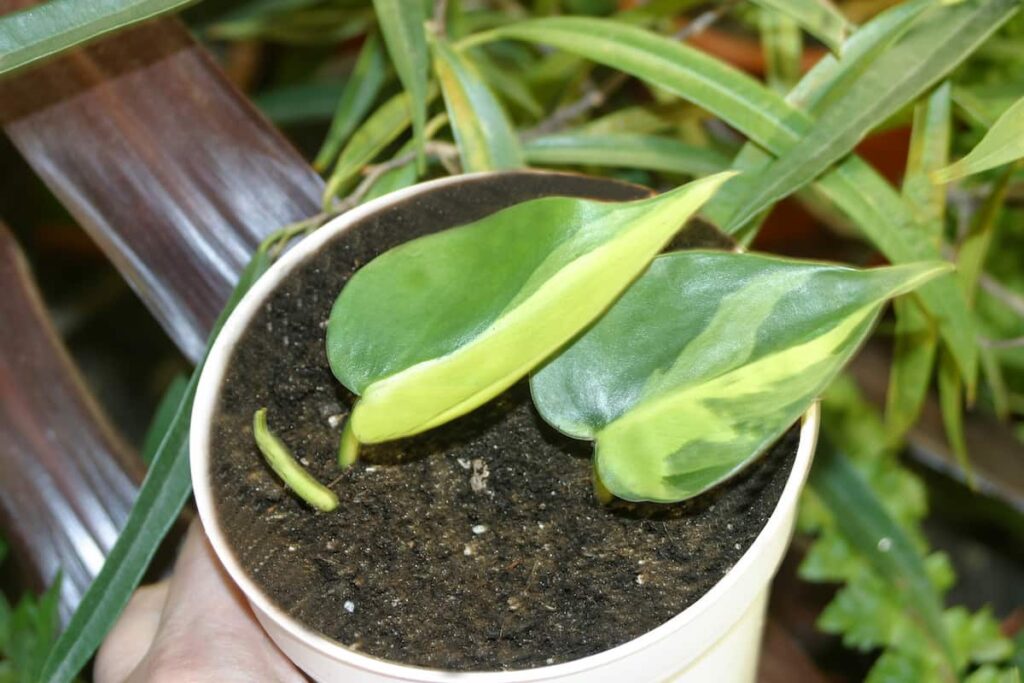
Is Philodendron Brasil rare?
Although the Philodendron Brasil has only been available for 30 years, it’s no longer considered rare and can usually be found in garden centers. One thing to note, however, is that juvenile Brasils look strikingly similar to Golden Pothos, so make sure to check for identifying characteristics before buying one.
In recent years, houseplants have seen an unprecedented rise in popularity, largely thanks to social media platforms like Instagram, which showcase all the greenage possibilities available to plant enthusiasts. As a result of this, philodendrons previously considered rare are becoming more freely available on the open market – as demand increases.
Given its good looks and easy nature, it’s no surprise that the Philodendron Brasil falls squarely into this category. As a fan favorite among both new buyers and collectors, the Brasil is kept in stock by plenty of nurseries, as well as by online merchants and specialist breeders.

Another factor adding to the prevalence of the Philodendron Brasil is how easy it is to propagate. Stem cuttings can be rooted in water or planted directly into soil, and have a high chance of successfully developing into juvenile plants that will thrive and mature over time.
That said, one thing to note about juvenile or propagated Brasils is that they look incredibly similar to the Golden Pothos, leading to many a case of mistaken identity. To avoid this, speak to your nursery personnel, or be on the lookout for the Brasil’s characteristic heart shape at the base of each leaf.
How do you make a Philodendron Brasil bushy?
The best way to make a Philodendron Brasil bushy is to prune it in its growing season, which is spring and summer. Make sure you remove any dead or dying leaves, as this ensures your plant doesn’t spend energy on this foliage and will instead focus on new growth.
Funnily enough, regularly trimming your plant is actually key to maximizing your philodendron’s growth rate.
Regularly turning your plant so that all its angles receive sunlight is another good way to ensure consistent, rounded, and aesthetic growth with a clustered appearance to make your philodendron fuller.
You can also use a moss pole so that your Philodendron Brasil has space to climb upwards, which is what it would do in its natural environment – aiming upwards towards a source of light.
Are Philodendron Brasil toxic?
Philodendron Brasil are toxic to humans and animals, as they contain sharp calcium oxalate crystals that cause skin irritation through direct contact, or gastrointestinal distress and other potentially dangerous symptoms when ingested. All parts of the plant contain these crystals, which are most prevalent in its sap.
While Philodendron Brasil are indisputably beautiful in the home, it is best to keep them away from curious kids and pets, as skin contact and ingestion can be highly irritating at best and have real health consequences at worst.
These plants’ sticky white sap is full of needle-like calcium crystals. When they make contact with bare skin, they can cause welts or irritating rashes, which, fortunately, can usually be treated with a topical skin ointment.
Be aware: Ingestion of any part of a Philodendron Brasil can cause swelling of the throat tissue, nausea, dizziness, diarrhea, and other symptoms of gastrointestinal distress.
In a worst-case scenario, ingestion can cause difficulty breathing, in which case, medical treatment should be sought as a matter of urgency.
While this all sounds very daunting, the good news is that these plants don’t taste good, so there is no real reason (other than curiosity or carelessness) why rogue children or pets would eat them. Even so, prevention is better than cure, so place your plants out of reach if you’re concerned they may get chomped.
Why are my Philodendron Brasil’s leaves turning yellow?
There are a few reasons why Philodendron Brasil leaves turn yellow, but the primary cause is overwatering, with yellowing leaves being an early sign of root rot. Damaged roots cannot transport nutrients, oxygen, and water to a plant’s leaves, which causes cell death, and by default, turns them yellow.
I find watering my plants to be the most cathartic exercise on earth. However, with some trial and error, I’ve learned that my Philodendron Brasil, in particular, doesn’t do well with being over-loved.
While they’re super hardy, too much hydration can quickly cause root rot in philodendrons – a fungal or bacterial infection that destroys your plant’s root system.

Therefore, if you notice yellowing leaves on your philodendron, run a diagnostic immediately. Is your soil damp or soggy? Allow it to dry out, which may reverse some of the damage. Lots of sun helps. Or if the damage is progressed, try repotting your Philodendron Brasil, removing damaging roots in the process.
A secondary cause of yellowing leaves is chemical burn, which your Philodendron Brasil may contract from over-fertilization. In this case, transplantation is also recommended, followed by a restriction of your feeding practices.
Why is my Philodendron Brasil drooping?
Drooping and wilting in Philodendron Brasil is more often than not related to watering practices. Too little water can cause fatigue which will make your plant look droopy, while too much water (or root rot) can also cause ill health. Generally, when a plant wilts, it is trying to communicate that it’s unwell.
While a drooping Philodendron Brasil is distressing, it’s not usually terribly serious and most likely due to dehydration. This can be solved with a dose of water and sunlight and, of course, more consistent care going forward. In no time, your plant should be back to its old self.
Conversely, if this doesn’t do the trick, your philodendron leaves curling may indicate an underlying issue like root rot, which, ironically, is caused by overwatering. If you suspect this is the case, you may be best off transplanting your Philodendron Brasil into fresh soil and readjusting your watering schedule.
A third cause of drooping is related to light. If a Philodendron Brasil isn’t receiving enough sun, it will tell you by dropping its leaves and wilting. Remember, six to eight hours a day is critical, and if you can’t provide this, mitigate potential drooping with supplementary grow lights.
Related: 10 Causes Of Your Philodendron Not Growing (+ How to Fix It)
Why are there brown spots on my Philodendron Brasil?
Like yellowing and drooping, brown spots on a Philodendron Brasil are a sign of a health ailment. Browning, in particular, is mainly caused by pest infestations or bacterial and fungal infections. The best way to get rid of brown spots is to identify the cause and then treat your plant accordingly.
None of us want to see our Philodendron Brasil suffer, and brown spots usually aren’t a very good sign. If you notice your philodendron leaves turning brown, the first thing you want to do is identify the cause, whether it be pests or soil-related.
In the case of creepy crawlies, you can treat your Philodendron Brasil by washing it down with a horticultural soap, followed by a wipe with neem oil. Remove damaged growth, and give your plant lots of love, water, and light.

On the other hand, bacterial and fungal infections are best treated by getting rid of old soil. I highly recommend transplanting your Philodendron Brasil (preferably in spring or summer), and cutting away any visible root and leaf damage, provided it’s not more than 30% of your plant’s total volume.
Brown spots on philodendrons can also be caused by sunburn, but in this case, they’ll look more like a sheen than a spot, per se. Sunburn can be prevented by keeping your Philodendron Brasil out of direct light.
Why are my Philodendron Brasil’s leaves falling off?
When a Philodendron Brasil’s leaves start to drop, it is more often than not a sign of either overwatering or underwatering. Root rot, a consequence of too much water, can cause leaves to wilt, curl, and fall. Underwatering, conversely, sees them dry and turn crisp before dropping.
Brasils are great communicators and will tell you when there is something in their environment they don’t enjoy. As hardy plants, they don’t have many health issues, so any sudden onset of leaf drop is a cause for immediate concern.
As mentioned, this is usually related to watering practices, with the first sign of an issue being wilting, curling, or dried leaves. You should adapt your hydration timeframes accordingly.
If watering is not the problem, it may be that your Brasil is scorching (you’ll note its leaves start turning pink), in which case you should move it to a shadier spot as soon as possible.
Can you grow Philodendron Brasil in LECA?
Lightweight Expanded Clay Aggregate (LECA), is an excellent growth medium for the Philodendron Brasil that all but eradicates the risk of root rot. As a soil-less medium, LECA is arguably more practical for measured hydration, soaking up and releasing water consistently and only as required for even distribution.
If, like me, you tend to want to love your plants to death, you may unintentionally run the risk of overwatering your Philodendron Brasil, which can wreak havoc on its root system. The reason for this is two-fold. For one, soggy soil is heavy and crushing to a Brasil’s sensitive roots. And two, stagnant or old water is a playground for beasties like fungi and bacteria.
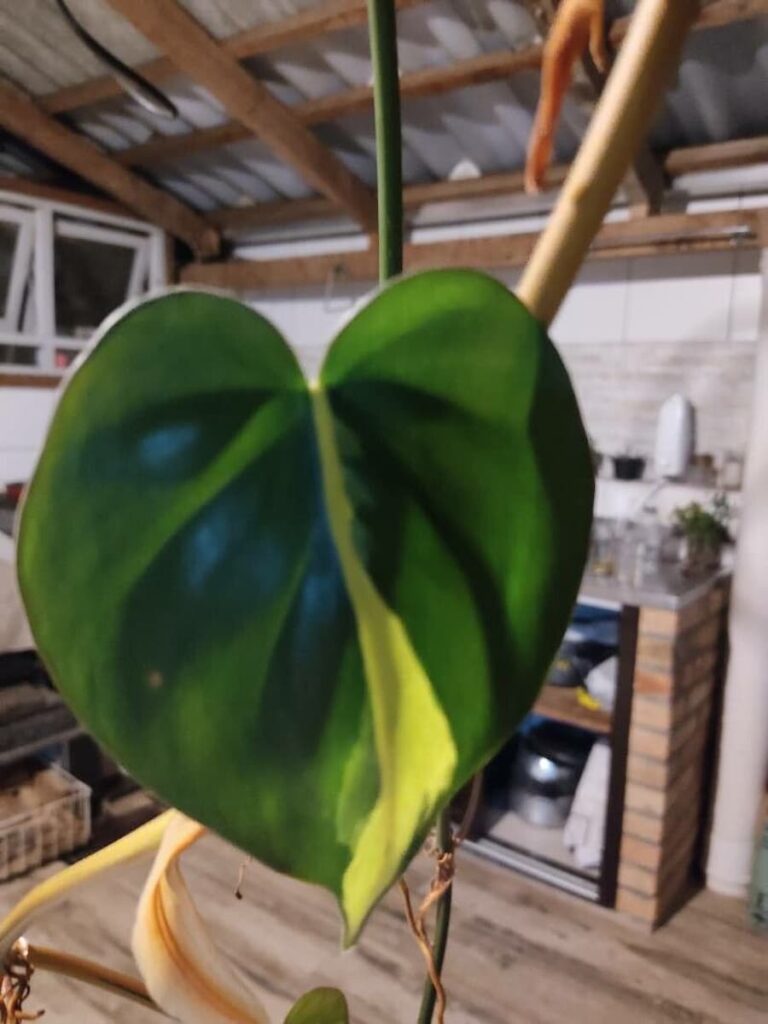
To prevent this, you may want to consider transplanting your Philodendron Brasil into LECA. This superb substrate consists of small, round, baked clay balls that draw in and distribute moisture as needed, making them a highly effective alternative to accidental overwatering.
In addition to this, LECA also maintains excellent air circulation, as oxygen can move freely between the clay balls. However, one downside is that it doesn’t retain the same nutrients as potting soil, so you may need to add an occasional nutritional supplement to your water.
How big do Philodendron Brasil grow?
The Philodendron Brasil is a small- to medium-sized plant, which can range from 6 to 36 inches (15 to 90 centimeters) tall, with a width of 12 to 36 inches (30 to 90 centimeters). Ultimately, its eventual scope depends on its environmental conditions, planter size, and general health.
Though hardly diminutive, the Philodendron Brasil is not one of the larger cultivars in the family, adopting a lower, bushier, more clustered growth aesthetic instead. But even so, its size is not something to be scoffed at, and in ideal conditions, this beauty can grow to be quite tall. But you may require the assistance of a moss pole or trellis so that it can reach upwards.
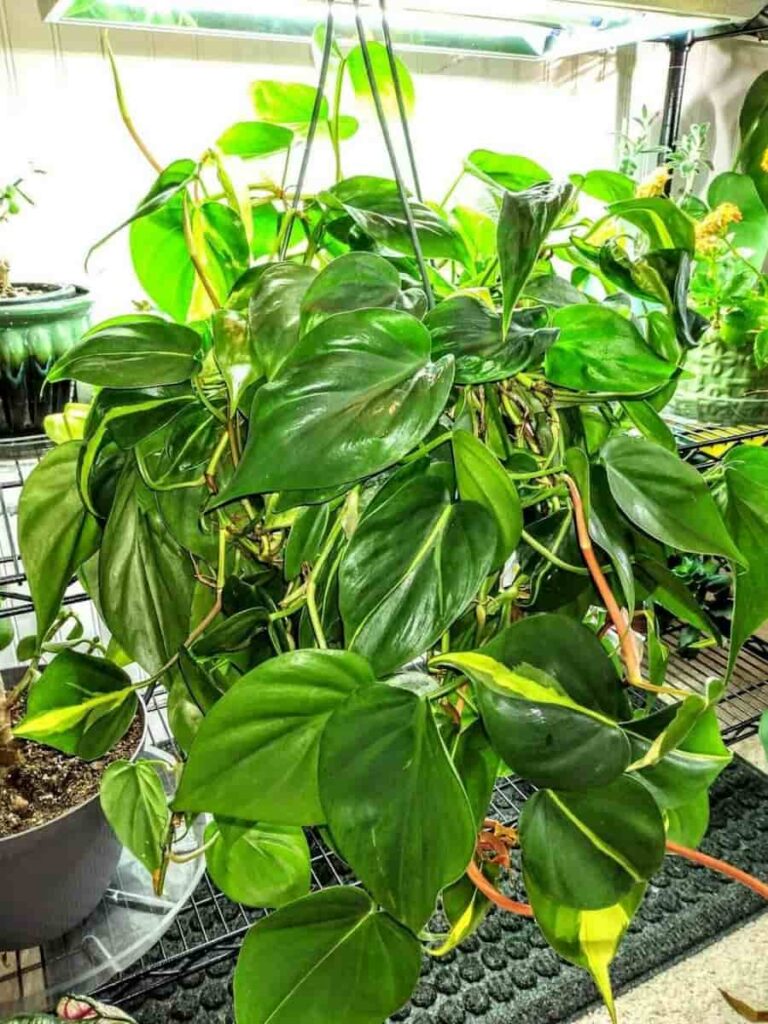
Given its natural tropical inclinations, the Brasil does best with plenty of light and humidity, which it needs to reach its full potential. It is nearly impossible to emulate the jungle atmosphere in a home environment, but with good soil, sunshine, and regular water, you’ll soon be well on your way.
As a fast-growing plant, it is also necessary to repot the Philodendron Brasil from time to time to give it space to expand and prevent it from becoming rootbound. Every 18 months to 2 years is a good estimation, but I recommend keeping an eye on your planter’s drainage holes, too, in case you see any sign of roots creeping through.
Should this be the case, it may be that your Brasil has outgrown its pot and is in dire need of a replant. Slowed growth is another indication of a shortage of root space, which can cause wellness issues over a prolonged period of time.
How do you increase variegation in Philodendron Brasil?
The best way to encourage variegation in a Philodendron Brasil is to provide it with plenty of bright, indirect sunlight so its color-bearing cells (chloroplasts) can function optimally. Should your Brasil seem to be turning green, light pruning and moving it to a brighter spot can help.
The distinct variegation of the Philodendron Brasil results from a naturally occurring genetic mutation. Consequently, the tissue of each leaf contains certain areas with many chlorophyll cells and certain areas with less so, the latter of which are the light green or yellow splatters extending from each center vein.
Though the Brasil is considered relatively stable, it may lose some of its variegation in low-light conditions.
To prevent this, the ideal placement for a Brasil is just a few feet back from a bright window that filters through sunlight without scorching or burning its leaves. Don’t be alarmed if new (baby) leaves look solid in color – they should variegate as they mature.
However, should you notice that your Philodendron Brasil has many solid green leaves that are full-sized, try pruning them back and moving your plant to a lighter, brighter area, where your Brasil can focus on producing new, brilliantly variegated growth.
Why is my Philodendron Brasil turning green?
A Philodendron Brasil turning solid green is indicative of problematic lighting conditions. Although your plant can remain healthy in lower light areas, a good daily dose of sun (preferably 6 to 8 hours) will prevent it from reverting and encourage bright variegation.
After all, the Brasil’s bright lime and yellow colors are what it is known for, so give it some hearty lighting to see your Brasil thrive and grow at a rapid rate.

Why is my Philodendron Brasil turning pink?
When a Philodendron Brasil starts to develop new leaves, it is not uncommon for them to have a slight and light pink tinge. However, should this coloration continue into maturity, it can signify that your Brasil’s leaves are scorching from too much sunlight.
In this case, you should consider moving it further back from your window or light source.
Alternatively, it may be that your plant is suffering from a nutrient deficiency or over-stimulation. Consider adjusting your fertilization practices accordingly and see if your Brasil’s color corrects itself.
